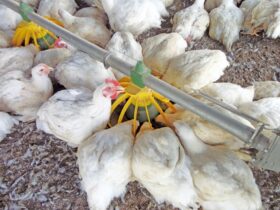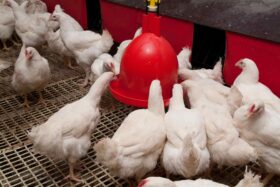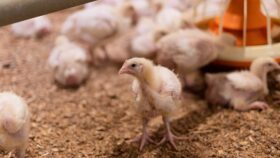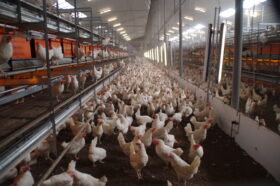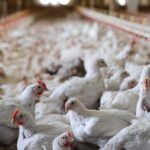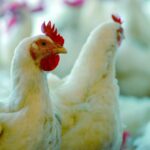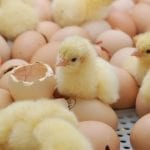by Twan van Gerwe, DVM PhD (EBVS), Technical Director, EW Nutrition
Controlling coccidiosis has been and continuous to be a major concern for poultry operations. However, for decades, some of these control measures have been taking an increasingly visible toll on the overall health of the flocks, the economics of poultry production, and the environment itself. Regulations have been put in place to defend consumer health and animal welfare while maintaining profitability in poultry production.
In the European Union and elsewhere, coccidiostats or anticoccidials are an essential means of control and are categorized either as feed additives or as veterinary medicinal products. The category is dictated by the pharmacologically active substance, mode of action, pharmaceutical form, target species and route of application.
In the European Union, there are currently 11 different coccidiostats which have been granted 28 different authorizations as feed additives allowed for specific usage in chickens, turkeys, and rabbits.
Coccidiostats: the basics
Compounds designed to kill the coccidial population are known as coccidiocidal; those designed to prevent the replication and development of coccidia are known as coccidiostats. Quite often, coccidiostat or anticoccidial is the term used to describe both categories.
Coccidiostats are antimicrobial compounds which either inhibit or destroy the protozoan parasites that cause coccidiosis in livestock. Each coccidiostat has individual inhibitory mechanisms. In the case of ionophores, the compounds affect transmembrane ion transport. In the case of synthetic compounds, the molecules’ mode of action is varied and, in some cases, not even entirely known (Patyra et al., 2023).
The production, manufacture, and marketing of coccidiostats, premixes with coccidiostats, and feed with coccidiostats are regulated by the Regulation (EC) No 183/2005 of the European Parliament and of the Council of 12 January 2005 laying down requirements for feed hygiene.
Coccidiostat categories
Coccidiostats fall under two categories:
Ionophores
Ionophores, sometimes called polyether ionophore antibiotics, are substances which contain a polyether group and are of bacterial origin. They are produced by fermentation with several strains of Streptomyces spp and Actinomadura spp. Six substances are allowed in the EU:
- monensin sodium (MON)
- lasalocid sodium (LAS)
- maduramicin ammonium (MAD)
- narasin (NAR)
- salinomycin sodium (SAL)
- semduramicin sodium (SEM)
Synthetic
Synthetic compounds include:
- decoquinate (DEC)
- diclazuril (DIC)
- halofuginone (HFG)
- nicarbazin (NIC)
- robenidine hydrochloride (ROB)
EU authorizations for ionophores are granted under specific conditions of usage, including animal category, minimum and maximum dosage, MRL (Maximum Residue Limits), and withdrawal periods.
Regulation (EC) No 1831/2003 [13] of the European Parliament and of the Council of 22 September 2003 distinguishes between coccidiostats and antibiotics used as growth promoters. Unlike the antibiotic growth promoters (forbidden in the EU since 2006), whose primary action site is the gut microflora, coccidiostats only have a secondary and residual activity against the gut microflora. That still signals that they have the potential to trigger resistance and to alter the natural balance and immune response of the farmed animals. Their potential to cause resistance has been widely acknowledged by science and practitioners alike (see below).
Why were some antimicrobial growth promoters withdrawn in 1997-1998 – but not others?
Five designated “antibiotic feed additives” were prohibited in 1997-98: Avoparcin, Bacitracin zinc, Spiramycin, Virginiamycin, and Tylosin phosphate. The EU withdrew their authorization in order to “help decrease resistance to antibiotics used in medical therapy”. The motivation specified that these antibiotics belonged to classes of compounds also used in human medicine.
On the other hand, the EU at the time allowed the remaining antibiotics for use in feed as they did not belong to classes of compounds used in human medicine. That, of course, did not mean that resistance did not develop in birds.
The Commission did acknowledge the need to phase out the remaining antibiotics. At the same time, it stated that the use of coccidiostats would not presently be ruled out “even if of antibiotic origin” (MEMO/02/66, 2022). The reason was that “hygienic precautions and adaptive husbandry measures are not sufficient to keep poultry free of coccidiosis. Modern poultry husbandry is currently only practicable if coccidiosis can be prevented by inhibiting or killing parasites during their development.”
In other words, the Commission acknowledged that the only reason ionophores were still authorized was that it believed there were no other means of controlling coccidiosis in profitable poultry production.
What issues are raised by current coccidiosis control measures?
In its 2022 Position Paper on Coccidia Control in Poultry, the European Veterinaries Federation states that “challenges in coccidia control are due to parasitic and bacterial drug (cross-)resistance. Coccidiostats also interact with other veterinary medicinal products and have a secondary residual activity against gram-positive bacteria” (FVE, 2022).
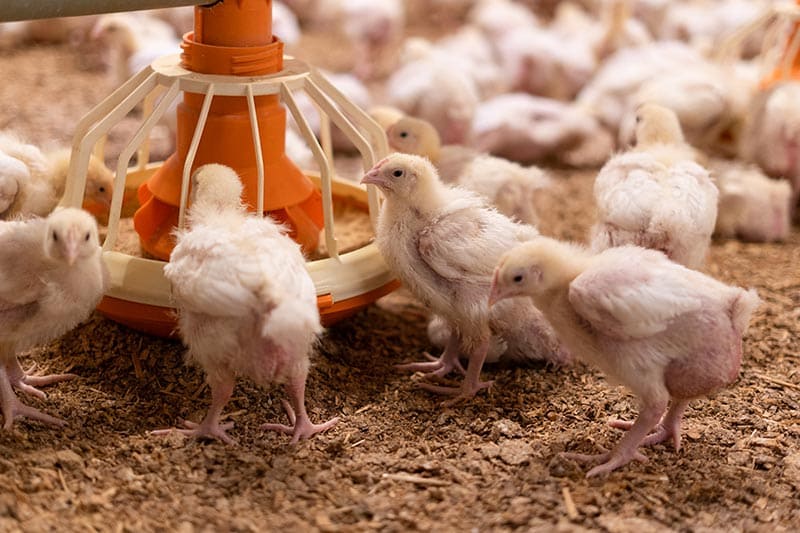
Resistance
Ever since 1939, when sulphanilamide was shown to cure coccidiosis in chickens, the industry increased the use of similar (chemical) compounds. It quickly added sulfaquinoxaline, then nitrofurazone and 3-notroroxarsone, amprolium and nicarbazin (Martins et al., 2022).
Prior to the introduction of the first ionophore, monensin, in the early 1970s, producers only had synthetic (non-ionophores) coccidiostats, characterized by rapid parasite resistance development. With the addition of ionophores, poultry operations started to rotate products between production cycles, or to use shuttle programs, with the express purpose of controlling the development of resistance. Synthetic compounds can, however, result in increased resistance in the long run (Martins et al., 2022). Moreover, studies in farmed animals indicate that sometimes even single use of antibiotics can promote the selection of resistant bacterial strains.
Another issue is the design of the rotation system, which, some researchers claim, could only delay the appearance of resistance (Daeseleire et al., 2017).
To make matters worse, for instance in the case of broilers, coccidiostats are generally administered throughout life to protect against re-infection. This may also lead to the next item on the list.
Residues
Regulation (EC) No 1831/2003 establishes Maximum Residue Limits (MRLs) for residues of an additive in relevant foodstuffs of animal origin. The goal is to control the use of coccidiostats in feed and ensure that there is no excess residue that ends up on the consumers’ plate.
Broilers can be fed with coccidiostats throughout life, with the exception of a certain withdrawal period before slaughter. Cross-contamination of feed batches and residue formation in edible tissues of nontarget species represent valid concerns for end consumers.
Coccidiostats in food have been regulated in the Commission Regulation (EC) No 124/2009, including maximum levels for meat ranging between 2 μg/kg (monensin, salinomycin, semduramycin, and manduramycin) and 100 μg/kg (nicarbazin in liver and kidney). However, Daeseleire et al. state that “in the period 2011–14, noncompliant results were reported for maduramycin, monensin, diclazuril, lasalocid, nicarbazin, robenidine, salinomycin, narasin, semduramicin, decoquinate, halofuginone, and toltrazuril. The matrices/animals species affected were in descending order eggs, poultry, farmed game, horses, pigs, and sheep/goat (EURL workshop, 2015)”. Residues in eggs are widely seen as a serious concern (Bello et al., 2023). The fact that regulations are in place constitute no safeguard against defective practices.
What alternatives to coccidiostats does the EU support?
Vaccination
Coccidiosis vaccines have been in use for the last three decades. They are based on precocious oocysts and are commonly used in breeding and laying birds, and the use in broilers is steadily increasing. There is a limited number of vaccines authorized in the EU. As vaccines are relatively costly to apply, vaccination is typically performed during 2-3 cycles only, afterwards reverting to the use of coccidiostats, which leads to a suppression of the precocious vaccine-origin strains, allowing persistent coccidiostat-resistant field strains to flourish.
Herbal products (phytomolecules)
Phytomolecules have been widely used for a variety of poultry gut health issues. Their usage in flocks at risk of coccidiosis is predicated on their ability to strengthen the natural defenses of the animal. Infection severity and consequences depend to a large extent on co-infections, gut health, and the general immunity of the bird.
Prescription veterinary medicines
Toltrazuril, amprolium, and some sulfamides (sulfamiderazin, sulfadimethoxin, trimethoprime) are used against (clinical) coccidiosis outbreaks. However, these medicines are also prone to triggering resistance and should not be widely used. Moreover, they are used when coccidiosis is already manifest on the farm, so they do not prevent economical and performance losses.
Other research
There is limited research on acidifiers, enzymes, prebiotics or probiotics acting as defenses against infection. Furthermore, oocysts are highly resistant to the common disinfectants, but there are some highly specialized types available. In general, producers are reluctant to use these methods as their benefits are limited or indemonstrable.
Genetic selection of the animals is also unable to offer solutions for the moment.
Ionophores as antibiotics: The U.S. case
Ionophores have demonstrated antibacterial activity (e.g., Rutkowski and Brzezinski, 2013). As opposed to their regime in the EU, where they are allowed as feed additives, in the United States, coccidiostats belonging to the polyether-ionophore class (ionophores) are not allowed in NAE (No Antibiotics Ever) and RWA (Raised Without Antibiotics) programs.
Instead of using ionophores, coccidiosis is approached by NAE/RWA US producers with a veterinary-led combination of live vaccines, synthetic compounds, phytomolecules, and farm management.
What are the perspectives of coccidiosis control?
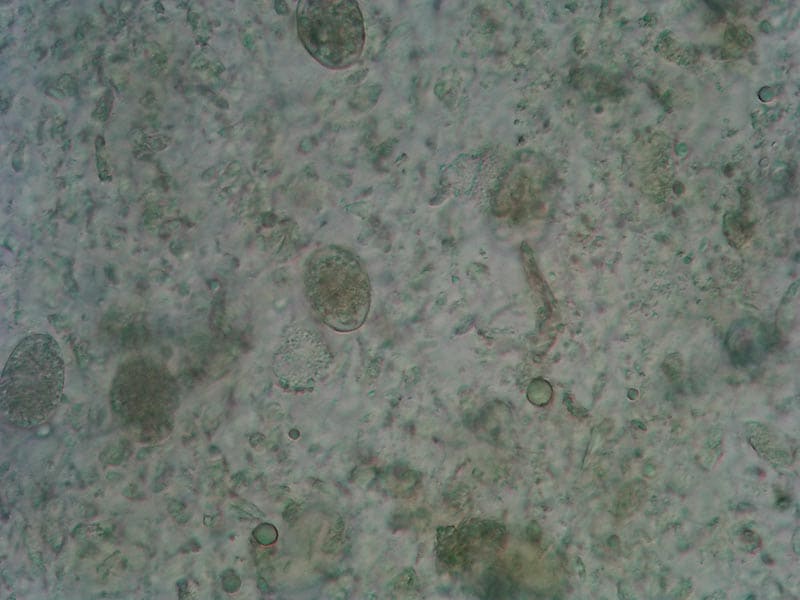
In 2019, The European Medicines Agency (EMA) published the new Veterinary Medicinal Products Regulation (EU2019/6), emphasizing the necessity of fighting antimicrobial resistance. In response to the VMP Regulation, in November 2022, the FVE (European Veterinaries Federation) recommended tackling coccidiosis through “a combination of holistic flock health management, optimized stocking density, litter management, feeding and drinking regime as well as nutraceuticals, accompanied by appropriate biosecurity measures, vaccination and coccidiostats, where indicated”.
In its position paper, FVE advocates a “prudent and responsible use of coccidiostats”, as well as monitoring of polyether ionophores coccidiostats sales through ESVAC (European Surveillance of Veterinary Antimicrobial Consumption). European Union past experiences show that strong urges for monitoring are usually implemented and signal a need for regulation. As other countries and regions have shown excellent productivity in the absence of ionophores, it may be that, sooner or later, the EU will revise its lax attitude and embrace a stricter control of antimicrobial resistance.
FVE also recommends the development of rapid, low-cost and especially quantitative diagnostic tests for ongoing surveillance and monitoring purposes. Through fast, reliable, on-site oocyst counts, producers can cut cost and time resources and improve reaction time to preserve the health of their flocks.
From a scientific perspective, considering the range of micro-organisms affected, ionophores can be seen as antibiotics, with the usual associated risks for cross-resistance or co-selection (Wong 2019). While their current status in the European Union represents a concession to the economic security of a large and important industry, best practices in other regions show that coccidiosis can be approached holistically with solutions that reduce antimicrobial resistance and support the profitability of poultry operations.
Bio-shuttle with natural anticoccidial additives: the all-encompassing solution
As producers optimize the use of biological interventions such as vaccines, their effect on broiler performance becomes more predictable and constant.
The current common practice of rotating coccidiostats fails to take advantage of the milder precocious Eimeria population that has developed within the broiler house. Instead, the use of new, natural feed additives with anticoccidial activity that is directly related to the coccidiostat-resistant Eimeria (field) strains, as well as the precocious Eimeria strains, can help to maintain a favorable ratio between mild precocious and more virulent field strains. This can help increase the number of cycles that benefit from the vaccinations applied, even when discontinuing vaccination. Careful monitoring of oocyst shedding patterns, preferably accompanied by gut health and coccidiosis lesion scoring and performance monitoring, can guide the producer on the right time to restart vaccination and repeat the same rotation program.
References
Bello, Abubakar et al. “Ionophore coccidiostats – disposition kinetics in laying hens and residues transfer to eggs”. Poultry Science, 2023, 102 (1), pp.102280. https://hal-anses.archives-ouvertes.fr/anses-03922139/file/Bello102280.pdf
Berfin Ekinci, İlksen, Agnieszka Chłodowska, and Małgorzata Olejnik. “Ionophore Toxicity in Animals: A Review of Clinical and Molecular Aspects”. International Journal of Molecular Biology, 2023 Jan; 24(2): 1696. https://www.ncbi.nlm.nih.gov/pmc/articles/PMC9863538/
Cervantes, H.M. and L.R. McDougald. “Raising broiler chickens without ionophore anticoccidials”. Journal of Applied Poultry Research. Volume 32, Issue 2, June 2023, 100347. https://doi.org/10.1016/j.japr.2023.100347
Commission of the European Communities. Report from the Commission to the Council and the European Parliament on the use of coccidiostats and histomonostats as feed additives, COM(2008)233 final, May 2008. Retrieved July 2023. https://eur-lex.europa.eu/legal-content/EN/TXT/HTML/?uri=CELEX%3A52008DC0233
Daeseleire et al. Chemical Contaminants and Residues in Food, 2nd edition, pp 595-605. Woodhead Publishing, 2017. https://www.sciencedirect.com/science/article/pii/B9780081006740000060
Dasenaki, Marilena and Nikolaos Thomaidis. „Meat Safety“. Lawrie’s Meat Science, 8th Edition, 2017. https://www.sciencedirect.com/science/article/pii/B9780081006948000182
European Commission. MEMO/02/66. Question and Answers on antibiotics in feed. March 2022 https://ec.europa.eu/commission/presscorner/detail/en/MEMO_02_66
European Commission. Commission Regulation (EC) No 124/2009 setting maximum levels for the presence of coccidiostats or histomonostats in food resulting from the unavoidable carry-over of these substances in non-target feed. Official Journal of the European Union. February 2009, retrieved July 2023. https://eur-lex.europa.eu/LexUriServ/LexUriServ.do?uri=OJ:L:2009:040:0007:0011:en:PDF
European Medicines Agency. Veterinary Medicinal Products Regulation. Retrieved July 2023. https://www.ema.europa.eu/en/veterinary-regulatory/overview/veterinary-medicinal-products-regulation
European Parliament. Regulation (EC) no 183/2005 of the European Parliament and of the council of 12 January 2005 laying down requirements for feed hygiene. Januyuary 2005, retrieved July 2023. https://eur-lex.europa.eu/legal-content/EN/TXT/PDF/?uri=CELEX:02005R0183-20220128
Federation of Veterinarians in Europe. FVE Position Paper on Coccidia Control in Poultry, 30 November 2022. https://fve.org/publications/fve-position-paper-on-coccidia-control-in-poultry/
Martins, Rui et al. “Coccidiostats and Poultry: A Comprehensive Review and Current Legislation”. Foods, 2022 Sep 11(18). https://www.ncbi.nlm.nih.gov/pmc/articles/PMC9497773/
Martins, Rui et al. “Risk Assessment of Nine Coccidiostats in Commercial and Home-Raised Eggs”. Foods 2023, 12(6), 1225; https://doi.org/10.3390/foods12061225
Merle, Roswitha et al. “The therapy frequency of antibiotics and phenotypical resistance of Escherichia coli in calf rearing sites in Germany”. Frontiers in Veterinary Science, Volume 10, May 2023. https://www.frontiersin.org/articles/10.3389/fvets.2023.1152246/full
Patyra, Ewelina et al. „Occurrence of antibacterial substances and coccidiostats in animal feed”. Present Knowledge in Food Safety, pp 80-95. Academic Press, 2023. https://www.sciencedirect.com/science/article/pii/B9780128194706000317
Rutkowski, J. and B. Brzezinski. “Structures and properties of naturally occurring polyether ionophores”. BioMed Research International, 2013 (2013), Article ID 162513. https://www.hindawi.com/journals/bmri/2013/162513/
Wong, Alex. “Unknown Risk on the Farm: Does Agricultural Use of Ionophores Contribute to the Burden of Antimicrobial Resistance?”, mSphere. 2019 Sep-Oct; 4(5): e00433-19. https://www.ncbi.nlm.nih.gov/pmc/articles/PMC6763768/

